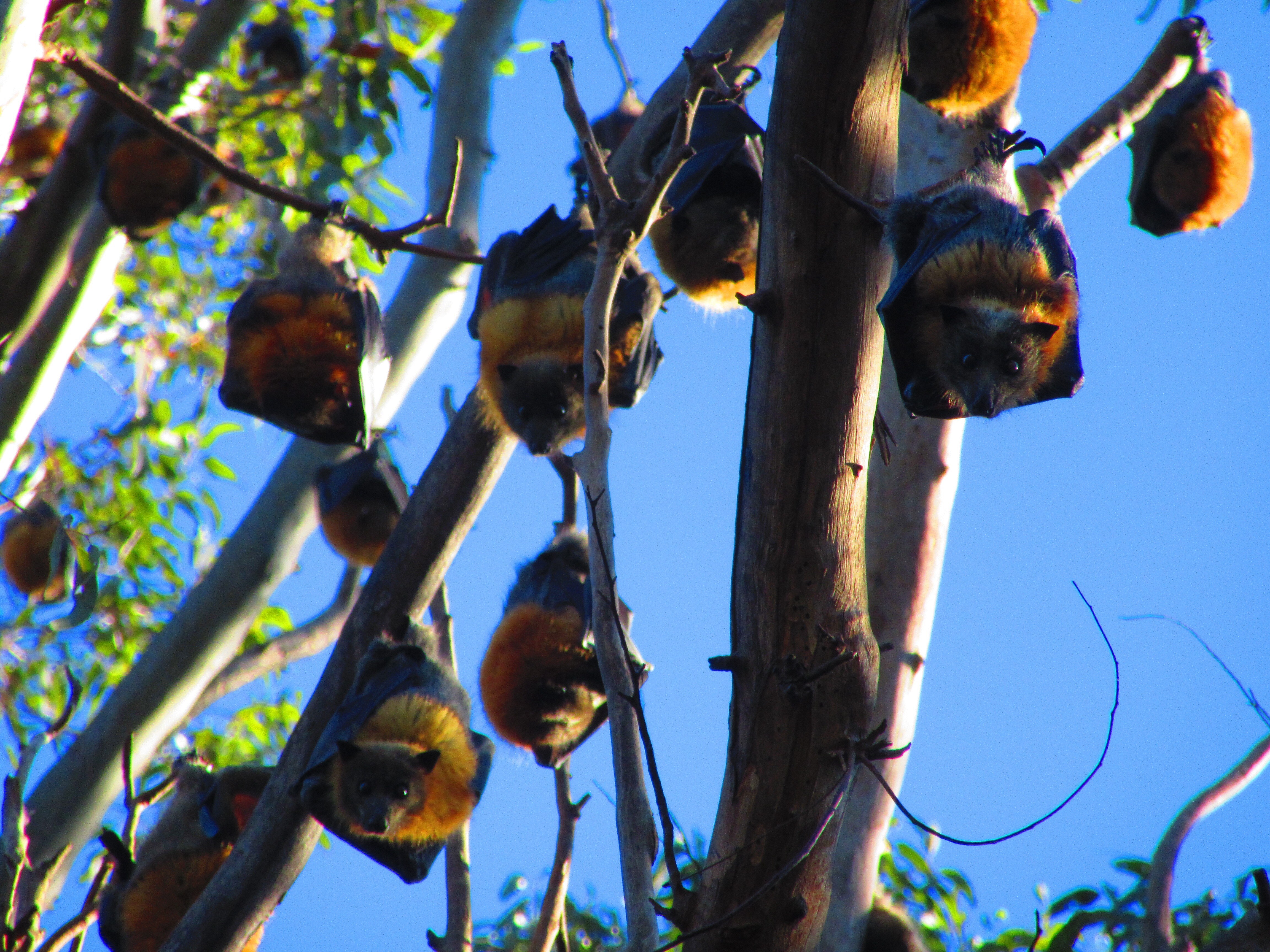Protecting Sydney’s Koalas: Why Corridor Advocacy Is Now Critical
December 2025
For emergency rescue support 24/7 please call 1300 094 737

The Unsung Heroes of the Night — Flying-Foxes
When most people think of pollinators, bright butterflies or buzzing bees come to mind. But as darkness falls, another group of vital pollinators takes to the skies — Australia’s native flying-foxes. These nocturnal mammals are the night gardeners of our forests and gardens, quietly sustaining life while we sleep.
Flying-foxes are among Australia’s most important — and least understood — pollinators. As they travel long distances each night in search of nectar, pollen, and fruit, they carry pollen between flowering trees, supporting the reproduction of native flora and the production of fruits and seeds that countless other species rely on.
Unlike smaller pollinators that work within a local patch, flying-foxes connect entire landscapes, dispersing pollen and seeds across kilometres of bushland. This long-distance service is critical for regenerating forests after droughts and fires — helping restore balance and biodiversity to fragile ecosystems.
Reforesting the Land
By feeding on fruit and dispersing seeds far from the parent tree, flying-foxes reforest the land naturally. Their nightly journeys help maintain healthy bushland and support new growth in degraded areas, creating vital habitat and food for birds, insects, and other native animals.
In short: without flying-foxes, many of Australia’s forests would struggle to recover and thrive.
Protecting Pollinators for the Future
At WIRES, we’re proud to support both research and hands-on conservation that protect these essential pollinators. Through our Research Grants and National Grants Program, WIRES is funding projects that improve flying-fox health, habitat, and long-term survival across Australia.
Some of these include:
Jaliigirr Biodiversity Alliance — a five-year project rehabilitating Grey-headed Flying-fox habitat at key breeding and winter foraging sites in the Bellingen and Coffs Harbour regions.
Macquarie University — researching bacterial pathogens and antibiotic resistance in juvenile Grey-headed Flying-foxes to improve care and health outcomes.
University of Queensland — investigating ways to reduce tick paralysis mortalities in the endangered Spectacled Flying-fox.
These projects are helping to secure food sources, expand roosting habitat, and ensure flying-foxes continue their vital role in Australia’s ecosystems.
Projects WIRES are supporting also include the Tolga Bat Hospital and Fly By Night Bat Clinic:
“The purchase of this intensive care unit is expected to increase survival outcomes for critically ill and injured Spectacled Flying-foxes. This unit is the only one available in the broader Cairns region and will be critical during our busy baby season this year.” Jennefer McLean, Tolga Bat Hospital

Image credit: Jennefer McLean, Tolga Bat Hospital
“The support has been significant as we haven’t needed additional help from emergency services like the fire brigade for high rescues of injured flying-foxes. We have all our ICUs in use at the moment — including two pregnant Grey-headed Flying-foxes, one rescued from barbed wire and another grabbed by a raptor.” Tamsyn Hogarth, Fly By Night Bat Clinic

Image credit: Tamsyn Hogarth, Fly By Night Bat Clinic
Stay in touch and get our regular rescue stories, WIRES updates and a free copy of our 15 Ways to Help Wildlife ebook
November 2025
November 2025
September 2025
August 2025
August 2025